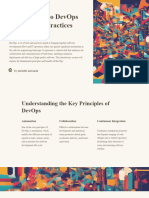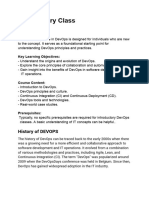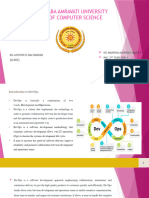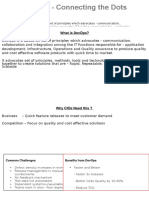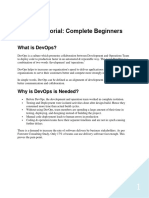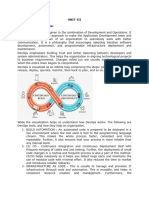0% found this document useful (0 votes)
139 views8 pagesDevOps Principles Practices
DevOps integrates software development and IT operations to enhance collaboration, automation, and efficiency, aiming to shorten the development lifecycle and deliver high-quality software. Key principles include collaboration, automation, CI/CD, and infrastructure as code, while practices involve version control, microservices, and automated testing. The adoption of various tools and practices leads to benefits such as faster releases, improved collaboration, and enhanced security.
Uploaded by
roshanameen.sit24Copyright
© © All Rights Reserved
We take content rights seriously. If you suspect this is your content, claim it here.
Available Formats
Download as PPTX, PDF, TXT or read online on Scribd
0% found this document useful (0 votes)
139 views8 pagesDevOps Principles Practices
DevOps integrates software development and IT operations to enhance collaboration, automation, and efficiency, aiming to shorten the development lifecycle and deliver high-quality software. Key principles include collaboration, automation, CI/CD, and infrastructure as code, while practices involve version control, microservices, and automated testing. The adoption of various tools and practices leads to benefits such as faster releases, improved collaboration, and enhanced security.
Uploaded by
roshanameen.sit24Copyright
© © All Rights Reserved
We take content rights seriously. If you suspect this is your content, claim it here.
Available Formats
Download as PPTX, PDF, TXT or read online on Scribd
/ 8


